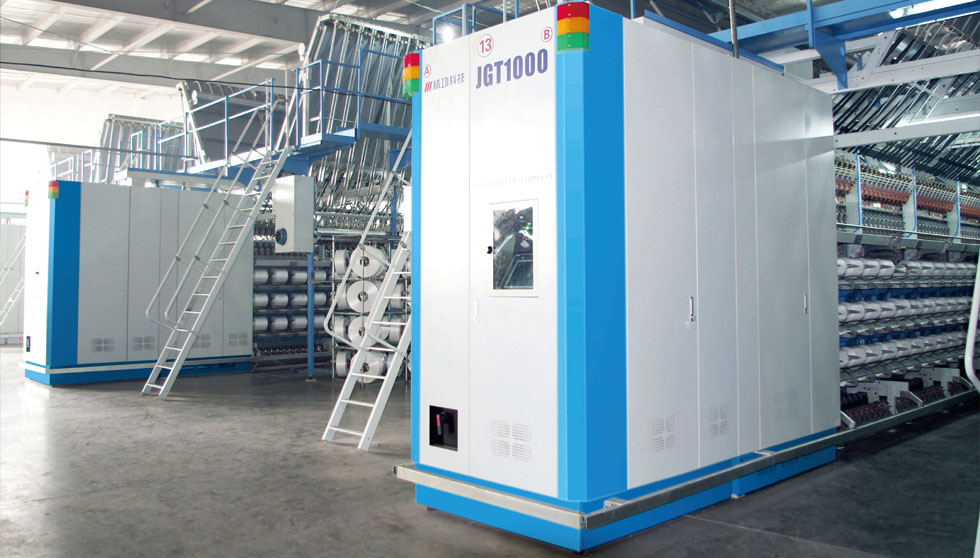Texturing Machine Process Knowledge

1. Fineness specification (dtex/f)
The fineness specification reflects the thickness, length, softness and other characteristics of polyester yarn, and is one of the most important indicators for product users to choose products.
For example, in FDY167dtex/96f, 167dtex represents the thickness of the fiber. 1 (dtex) means that the weight of the wire per 10,000 meters is 1 gram, so 167dtex means that the weight of the silk per 10,000 meters is 167 grams. F represents the number of single fibers of the fiber. In the production process of polyester yarn, except for single yarn, other polyester yarns are composed of many single fibers. In this example, 96F represents the polyester yarn of this specification. It is composed of 96 single fibers, which mainly reflects the softness of the fibers. Generally, the higher the F number, the softer the product it produces. 1 denier (D) = 1.11 decitex (dtex), so FDY167dtex/96f can also be expressed as 150D/96F, the meaning of 1 denier (D) is: the weight of every 9000 meters of silk is 1 gram .
2. Breaking strength (CN/dtex)
The breaking strength is an index to measure the maximum tensile force that the fiber can withstand when it is stretched in the forward direction. The strength can directly affect the tear strength and abrasion resistance of the finished fabric. If the breaking strength of the fiber is too low, the fiber will break during the weaving process, and the tear strength of the finished fabric will be insufficient, thus affecting the production efficiency of the enterprise and the quality of the finished fabric. The requirements for breaking strength are generally above 3.0 CN/dtex. Under normal circumstances, the breaking strength of FDY and DTY products is roughly between 3.3CN/dtex and 4.2CN/dtex, which can meet the weaving needs.
3. Elongation at break%
The elongation at break is mainly the residual ratio of the test fiber during the forward stretching process. Generally, POY products are 110%-130%; FDY products are 20%-30%; DTY products are 15%-25%. Generally speaking, fibers with lower residual elongation have better dyeability, higher strength and higher crimp rate. Therefore, lower residual elongation is generally selected without causing fiber fuzz. Excessive residual elongation will cause DTY to produce stiff silk problems, FDY is prone to problems such as uneven dyeing, and will lead to a decrease in fiber shrinkage, fabric dyeing and finishing is not easy to set, wrinkling and other adverse effects.
4. Curl shrinkage H.C.C
Under normal circumstances, the higher the curl shrinkage rate, the better the relative bulkiness of DTY, and the richer cloth surface of the finished product. This indicator can be obtained by adjusting the bombing process. Generally, there are no specific requirements for this indicator of DTY. The low elasticity is below 20%, and the network high elasticity is about 30%. If the customer has special needs, the production process needs to be adjusted accordingly.
5. Boiling water shrinkage rate BWS
Boiling water shrinkage is the percentage of fiber that shrinks when exposed to hot water (high temperature 100°C). This index is an important parameter for the later weaving, dyeing and finishing. When the shrinkage rate of boiling water is relatively high, the warp direction is easy to short code, but when the cloth is set, the cloth surface will be better. When the shrinkage rate in boiling water is too low, the shrinkage rate is insufficient, it is not easy to shape, it is easy to wrinkle, and the warp shrinkage is less.
6. Oil content OPU%
OPU% refers to the oil content ratio of the fiber. The main function of oil is to reduce friction, antistatic, antibacterial, antioxidation, etc. Too high or too low oil content will have adverse effects on the product. For DTY products, more than 1.0% is generally required, of which more than 1.5% for knitting, and more than 2.5% for high-tension weaving machines such as rapier and jacquard. For FDY products, it is generally 0.7%-1.2%, the glossy filament is higher than the semi-glossy filament, the special-shaped filament is higher than the round shape, and the warp knitting application is higher than the water spray. For the selection of oil agents, large manufacturers generally choose oil agents imported from Germany and Japan, and the oil content is generally controlled within the scope of the national standard. The oils of some small chemical fiber factories are generally domestically produced, and some of the oils are poor, which will cause problems such as yellowing of the fibers for a long time, and the oil content of the fibers is also relatively high.
7. Boiling water shrinkage rate BWS
Boiling water shrinkage is the percentage of fiber that shrinks when exposed to hot water (high temperature 100°C). This index is an important parameter for the later weaving, dyeing and finishing. When the shrinkage rate of boiling water is relatively high, the warp direction is easy to short code, but when the cloth is set, the cloth surface will be better. When the shrinkage rate in boiling water is too low, the shrinkage rate is insufficient, it is not easy to shape, it is easy to wrinkle, and the warp shrinkage is less.

